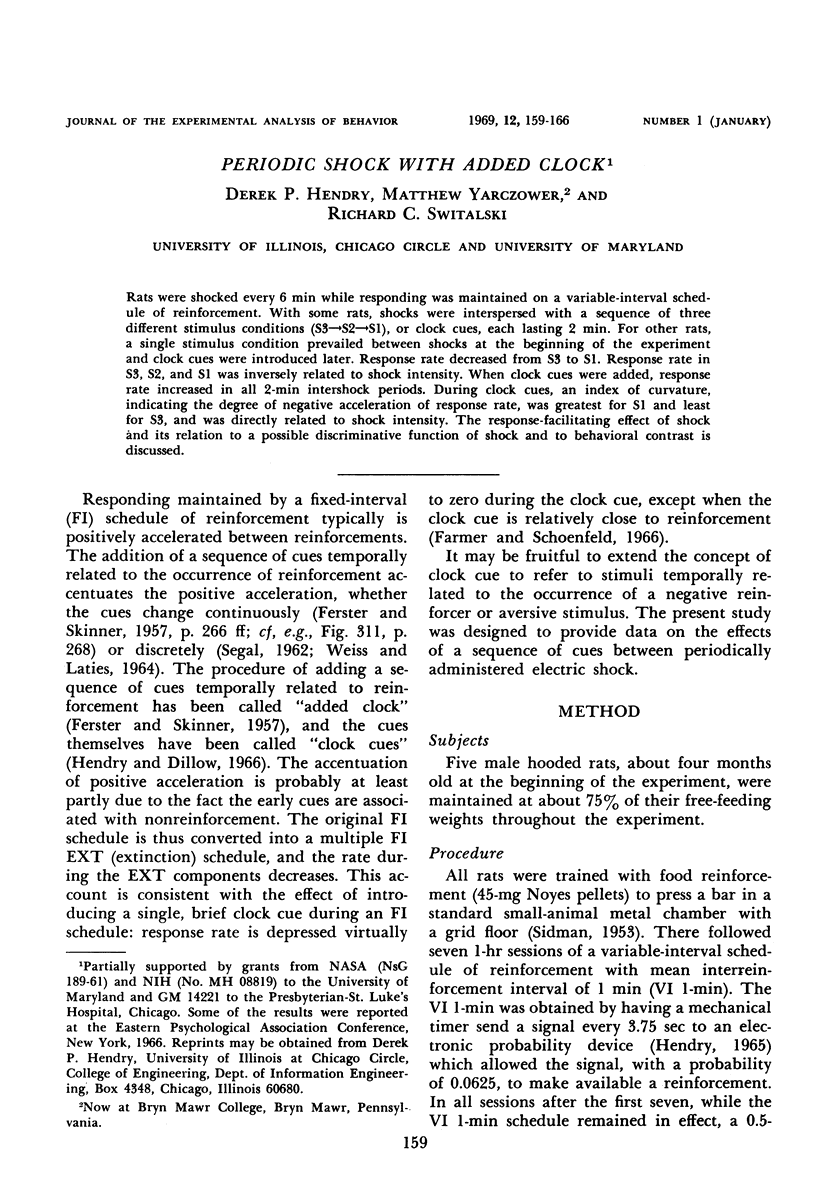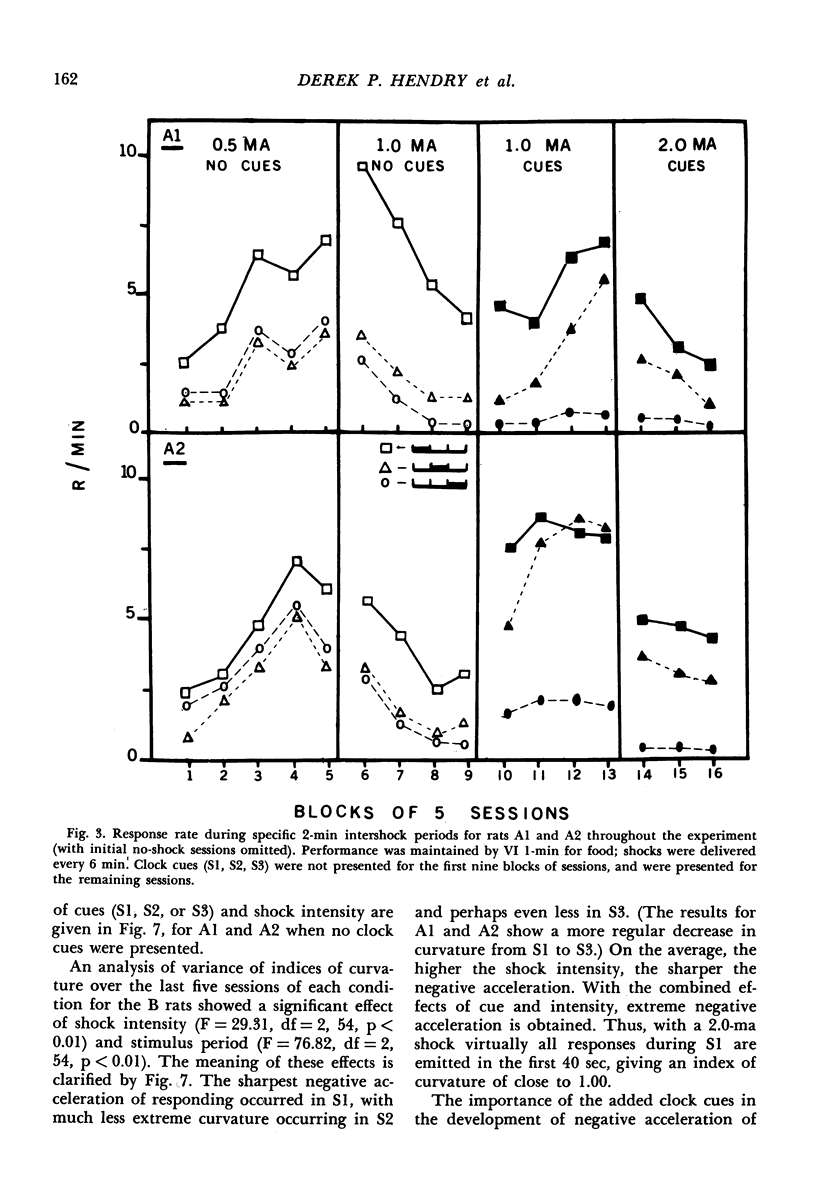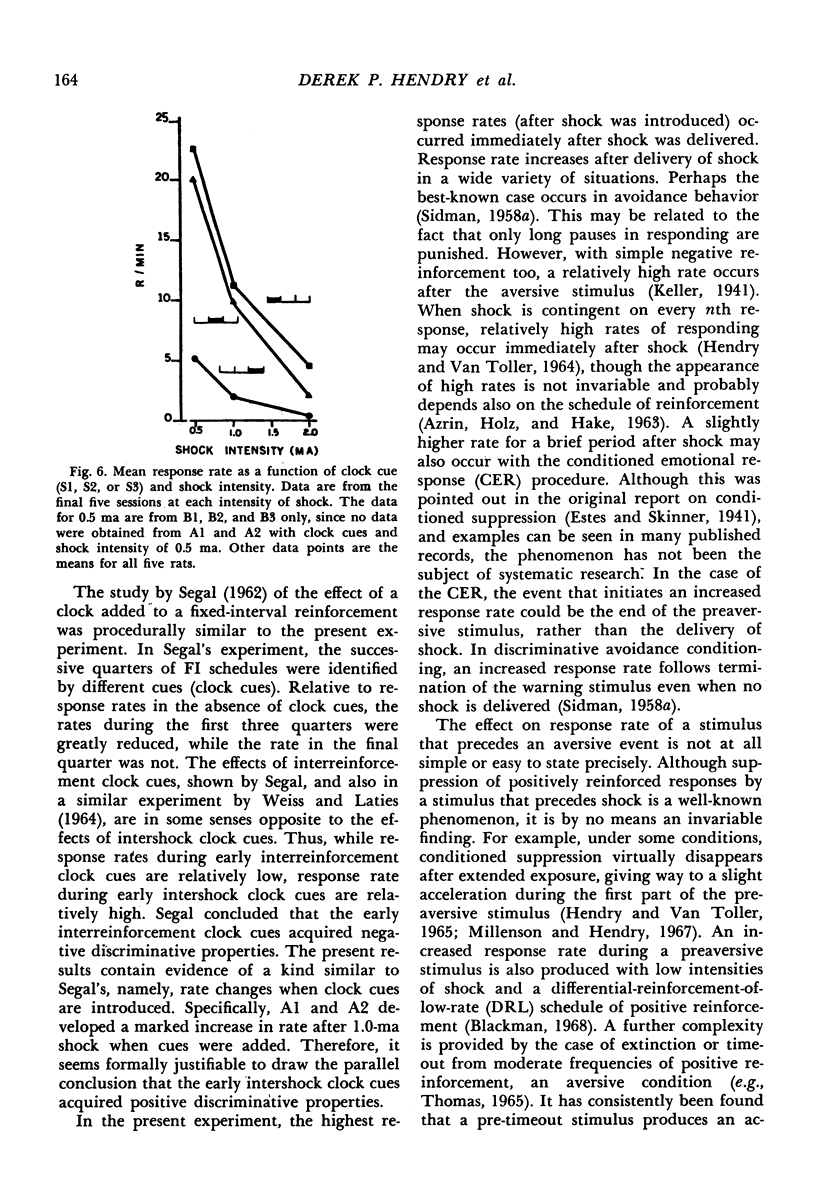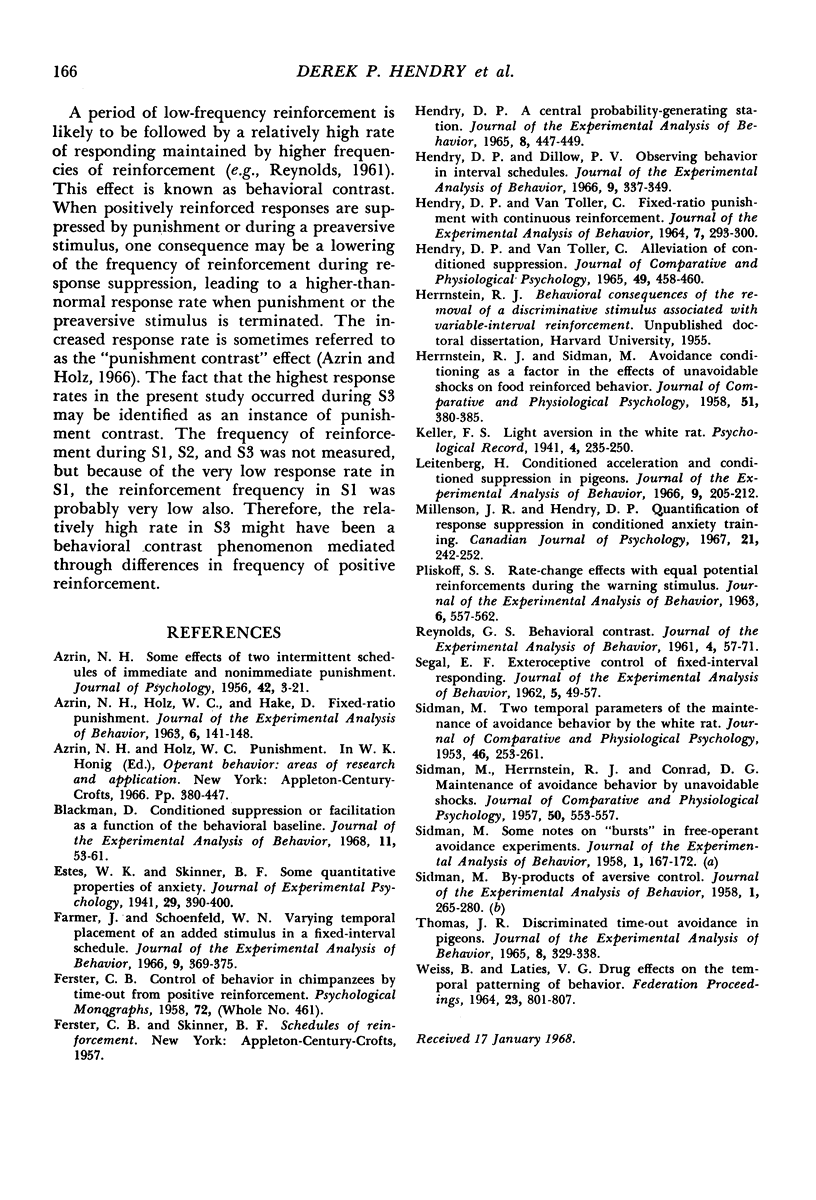Abstract
Rats were shocked every 6 min while responding was maintained on a variable-interval schedule of reinforcement. With some rats, shocks were interspersed with a sequence of three different stimulus conditions (S3→S2→S1), or clock cues, each lasting 2 min. For other rats, a single stimulus condition prevailed between shocks at the beginning of the experiment and clock cues were introduced later. Response rate decreased from S3 to S1. Response rate in S3, S2, and S1 was inversely related to shock intensity. When clock cues were added, response rate increased in all 2-min intershock periods. During clock cues, an index of curvature, indicating the degree of negative acceleration of response rate, was greatest for S1 and least for S3, and was directly related to shock intensity. The response-facilitating effect of shock and its relation to a possible discriminative function of shock and to behavioral contrast is discussed.
Full text
PDF







Selected References
These references are in PubMed. This may not be the complete list of references from this article.
- AZRIN N. H., HOLZ W. C., HAKE D. F. Fixed-ratio punishment. J Exp Anal Behav. 1963 Apr;6:141–148. doi: 10.1901/jeab.1963.6-141. [DOI] [PMC free article] [PubMed] [Google Scholar]
- Blackman D. Conditioned suppression or facilitation as a function of the behavioral baseline. J Exp Anal Behav. 1968 Jan;11(1):53–61. doi: 10.1901/jeab.1968.11-53. [DOI] [PMC free article] [PubMed] [Google Scholar]
- Farmer J., Schoenfeld W. N. Varying temporal placement of an added stimulus in a fixed-interval schedule. J Exp Anal Behav. 1966 Jul;9(4):369–375. doi: 10.1901/jeab.1966.9-369. [DOI] [PMC free article] [PubMed] [Google Scholar]
- HENDRY D. P., VANTOLLER C. FIXED-RATIO PUNISHMENT WITH CONTINUOUS REINFORCEMENT. J Exp Anal Behav. 1964 Jul;7:293–300. doi: 10.1901/jeab.1964.7-293. [DOI] [PMC free article] [PubMed] [Google Scholar]
- HERRNSTEIN R. J., SIDMAN M. Avoidance conditioning as a factor in the effects of unavoidable shocks on food-reinforced behavior. J Comp Physiol Psychol. 1958 Jun;51(3):380–385. doi: 10.1037/h0038487. [DOI] [PubMed] [Google Scholar]
- Hendry D. P. A central probability--generating station. J Exp Anal Behav. 1965 Nov;8(6):447–449. doi: 10.1901/jeab.1965.8-447. [DOI] [PMC free article] [PubMed] [Google Scholar]
- Hendry D. P., Dillow P. V. Observing behavior during interval schedules. J Exp Anal Behav. 1966 Jul;9(4):337–349. doi: 10.1901/jeab.1966.9-337. [DOI] [PMC free article] [PubMed] [Google Scholar]
- Leitenberg H. Conditioned acceleration and conditioned suppression in pigeons. J Exp Anal Behav. 1966 May;9(3):205–212. doi: 10.1901/jeab.1966.9-205. [DOI] [PMC free article] [PubMed] [Google Scholar]
- Millenson J. R., Hendry D. P. Quantification of response suppression in conditioned anxiety training. Can J Psychol. 1967 Jun;21(3):242–252. doi: 10.1037/h0082981. [DOI] [PubMed] [Google Scholar]
- PLISKOFF S. S. RATE-CHANGE EFFECTS WITH EQUAL POTENTIAL REINFORCEMENTS DURING THE "WARNING" STIMULUS. J Exp Anal Behav. 1963 Oct;6:557–562. doi: 10.1901/jeab.1963.6-557. [DOI] [PMC free article] [PubMed] [Google Scholar]
- REYNOLDS G. S. Behavioral contrast. J Exp Anal Behav. 1961 Jan;4:57–71. doi: 10.1901/jeab.1961.4-57. [DOI] [PMC free article] [PubMed] [Google Scholar]
- SIDMAN M., HERRNSTEIN R. J., CONRAD D. G. Maintenance of avoidance behavior by unavoidable shocks. J Comp Physiol Psychol. 1957 Dec;50(6):553–557. doi: 10.1037/h0043500. [DOI] [PubMed] [Google Scholar]
- SIDMAN M. Two temporal parameters of the maintenance of avoidance behavior by the white rat. J Comp Physiol Psychol. 1953 Aug;46(4):253–261. doi: 10.1037/h0060730. [DOI] [PubMed] [Google Scholar]
- Segal E. F. Exteroceptive control of fixed-interval responding. J Exp Anal Behav. 1962 Jan;5(1):49–57. doi: 10.1901/jeab.1962.5-49. [DOI] [PMC free article] [PubMed] [Google Scholar]
- Sidman M. By-products of aversive control. J Exp Anal Behav. 1958 Aug;1(3):265–280. doi: 10.1901/jeab.1958.1-265. [DOI] [PMC free article] [PubMed] [Google Scholar]
- Sidman M. Some Notes on "Bursts" in Free-operant Avoidance Experiments. J Exp Anal Behav. 1958 Apr;1(2):167–172. doi: 10.1901/jeab.1958.1-167. [DOI] [PMC free article] [PubMed] [Google Scholar]
- THOMAS J. R. DISCRIMINATED TIME-OUT AVOIDANCE IN PIGEONS. J Exp Anal Behav. 1965 Sep;8:329–338. doi: 10.1901/jeab.1965.8-329. [DOI] [PMC free article] [PubMed] [Google Scholar]
- WEISS B., LATIES V. G. DRUG EFFECTS ON THE TEMPORAL PATTERNING OF BEHAVIOR. Fed Proc. 1964 Jul-Aug;23:801–807. [PubMed] [Google Scholar]


